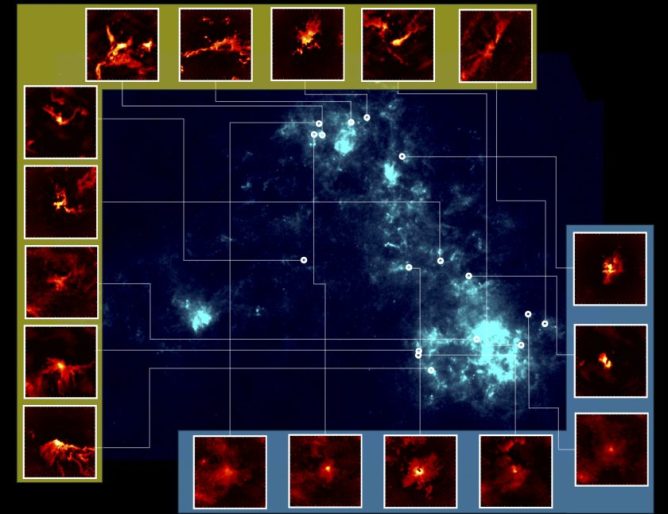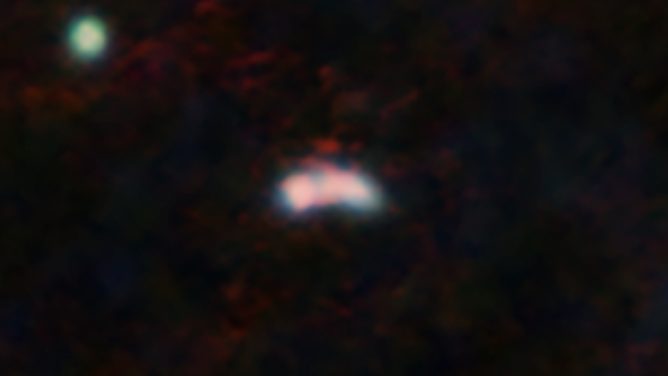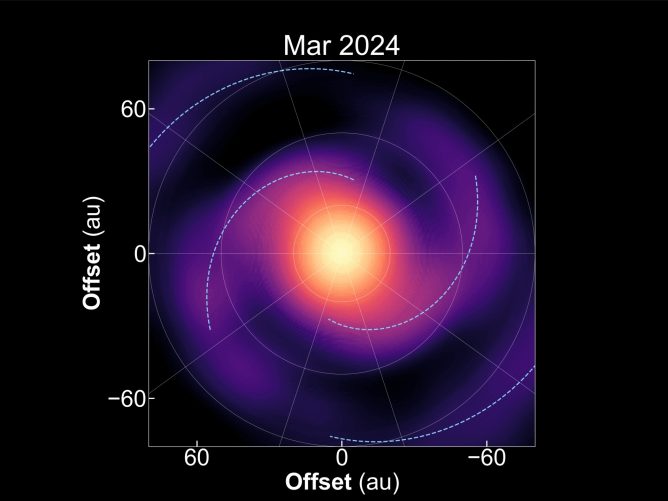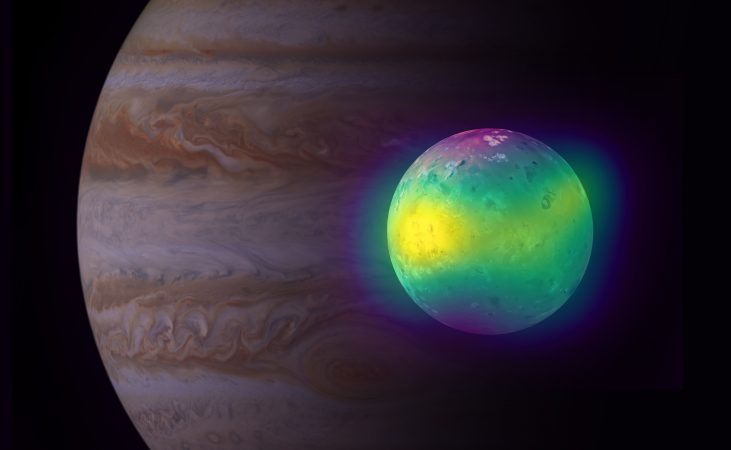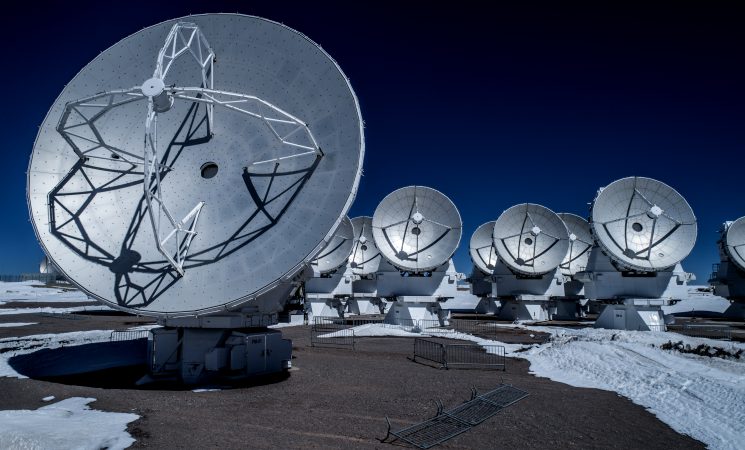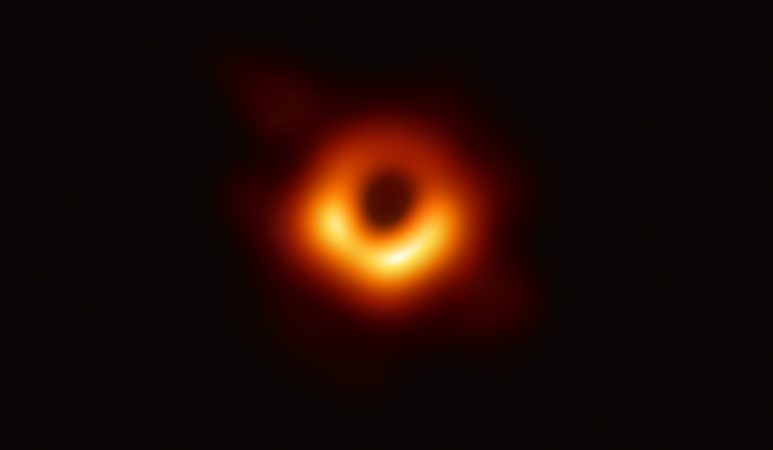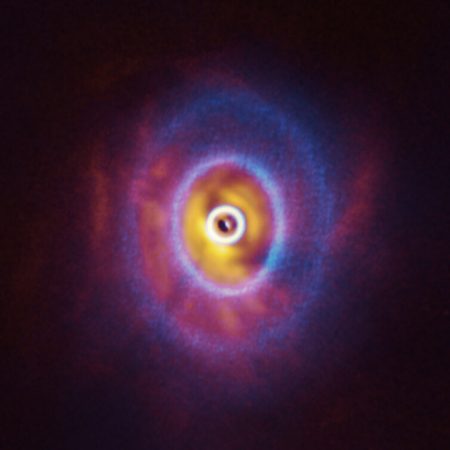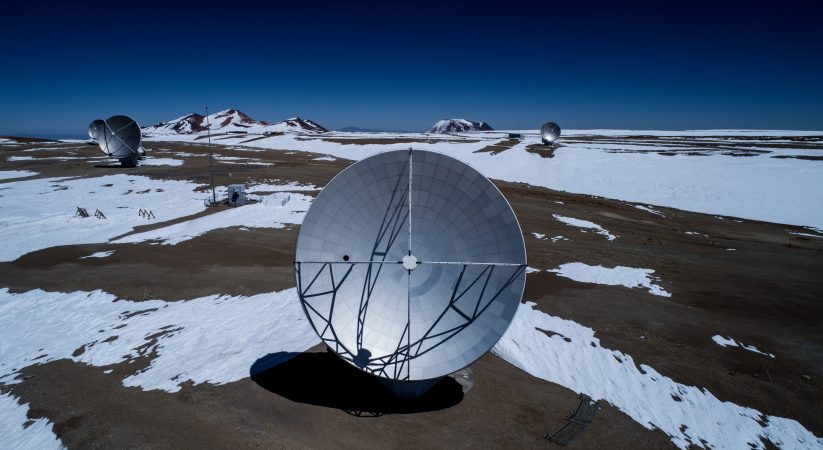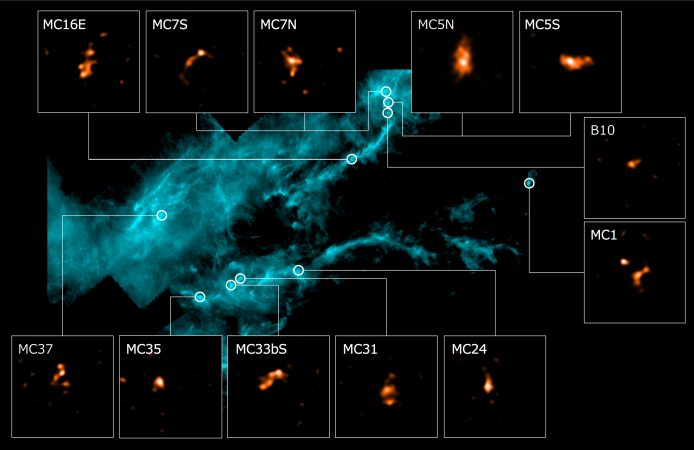2025.02.06
Magnetic Field in Planet Formation has been Successfully Observed

Figure 1: ALMA 0.9 mm observation of the protoplanetary disk surrounding HD 142527. The directions of the magnetic field (white bars) are measured from the dust polarization observed in the south part of the disk. Credit: ALMA (ESO/NAOJ/NRAO), S. Ohashi et al.
In order to study the origin of life, it is important to understand how Earth-like planets form. It has been thought that a planet forms by gradually accumulating interstellar dust and gas within a protoplanetary disk surrounding a young star. However, there are still many unsolved mysteries about the environment of planet formation and physical conditions inside the protoplanetary disk.
One of those mysteries is the magnetic field. It is thought to be a crucial factor to determine the turbulence and the movement of matter in a protoplanetary disk. Nevertheless, it has been difficult to observe the magnetic field in a protoplanetary disk. The magnetic field is an invisible vector field produced by magnet or electric current. The magnetic field influences matter and energy, just like the Earth’s magnetic field. This invisible force exists everywhere in the Universe and has much to do with star and planet formation.
HD 142527 is a protoplanetary disk with a lot of dust particles gathering in the north part (the upper side in Figure 1) and that is where planets are forming.
(https://www.nao.ac.jp/news/science/2016/20161205-alma.html)
Ohashi and his research group carried out ALMA 3 mm observations of dust polarization in the protoplanetary disk around HD 142527. They analyzed the polarization mechanisms by combining their new data with the archived data of ALMA 0.9, 1, and 2 mm observations of HD 142527. They found, in the south part (the lower side in Figure 1), the same polarization pattern in all the observed wavelengths, suggesting that this characterized polarization pattern (the polarization vector is the same as the radial direction of the disk and has strong polarization over 10%) is caused by the magnetic field (Figure 1).
In addition, the research group found that the direction of the magnetic field varies slightly along the rotation direction of the disk. They thought that these changes of direction are caused by the magnetic field’s three-dimensional structure. They estimated that the strength of the magnetic field is about 0.3 milligauss along the rotation direction and about 0.1 milligauss in both the vertical direction and in the direction toward the central star. The team suggests that this three-dimensional structure might create a strong turbulence field within the disk (Figure 2).

Figure 2. An illustration of the magnetic field structure in the protoplanetary disk surrounding HD 142527. Credit: ALMA (ESO/NAOJ/NRAO), S. Ohashi et al.
Many protoplanetary disks have been found so far, but this is the first time that the magnetic field’s detailed structure can be observed. Interestingly, it was not theoretically expected that the magnetic field has a certain level of strength toward the central star and in the vertical direction of the disk around a young star like HD 142527, therefore further investigations are needed.
Satoshi Ohashi says, “We have found the conditions to observe the magnetic field in a protoplanetary disk and provided a method to measure the three-dimensional structure, and the strength of the magnetic field. Therefore, our findings can be a huge help to the future observations of the magnetic fields of the protoplanetary disks. On the other hand, during the formation of planets like the Earth, in highly turbulent conditions interstellar dust grains collide with each other at high speeds and they destroy themselves, so that might prevent planets from forming. While we observed the magnetic field relatively far from the central star this time, it will be important in the future to observe the magnetic fields at the formation places of planets close to the central stars, like the Earth. Our findings will pave the road to future research to understand how the magnetic field influences planet formation.“
This research has been published in Nature Astronomy on February 5, 2025 as “Observationally derived magnetic field strength and 3D components in the HD 142527 disk” (DOI: 10.1038/s41550-024-02454-x).
This research is supported by Grants-in-Aid from the Japan Society for the Promotion of Science (KAKENHI: Nos. JP20K14533, JP20K04017, JP20H00182, JP22H01275, JP23K22546, JP23K03463, JP24K07097).
The Atacama Large Millimeter/submillimeter Array (ALMA), an international astronomy facility, is a partnership of the European Organisation for Astronomical Research in the Southern Hemisphere (ESO), the U.S. National Science Foundation (NSF) and the National Institutes of Natural Sciences (NINS) of Japan in cooperation with the Republic of Chile. ALMA is funded by ESO on behalf of its Member States, by NSF in cooperation with the National Research Council of Canada (NRC) and the National Science and Technology Council (NSTC) in Taiwan and by NINS in cooperation with the Academia Sinica(AS) in Taiwan and the Korea Astronomy and Space Science Institute (KASI).
ALMA construction and operations are led by ESO on behalf of its Member States; by the National Radio Astronomy Observatory (NRAO), managed by Associated Universities, Inc. (AUI), on behalf of North America; and by the National Astronomical Observatory of Japan (NAOJ) on behalf of East Asia. The Joint ALMA Observatory (JAO) provides the unified leadership and management of the construction, commissioning and operation of ALMA.

